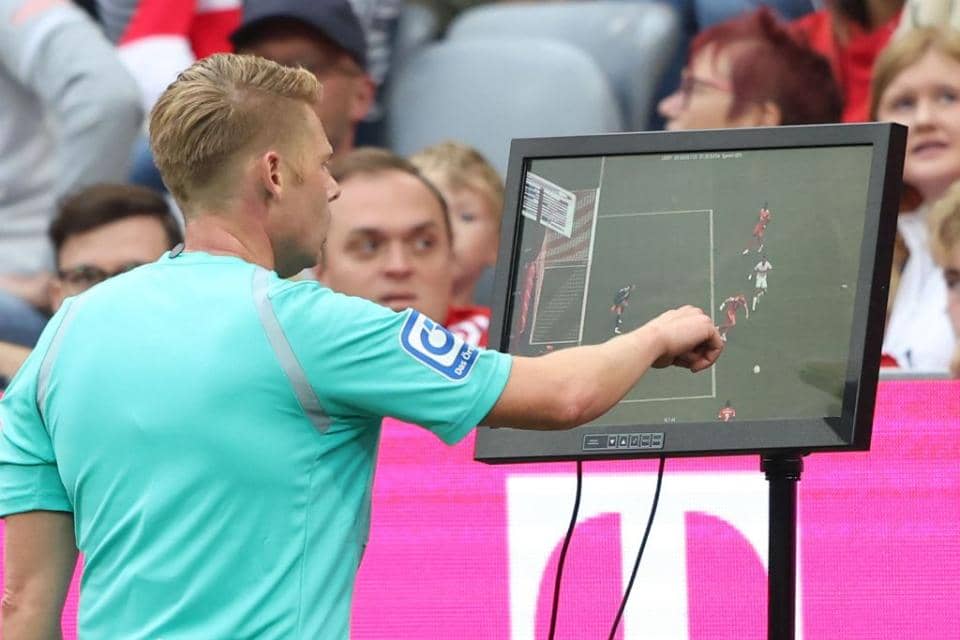
In the ever-evolving world of soccer, technology is playing an increasingly significant role in shaping the game. From video assistant referees (VAR) to wearable devices, the sport is experiencing a technological revolution that promises to enhance the experience for players and fans alike.
In this article, we’ll explore the impact of VAR, wearable technology, and what the future holds for the beautiful game.
VAR: Revolutionizing Decision-Making
Video assistant referees (VAR) have been a game-changer in the world of soccer. Introduced to help referees make more accurate decisions, VAR uses video replays and technology to review key moments during a match, including goals, penalties, and red card incidents.
This addition to the game aims to reduce human errors and ensure fairness on the pitch.
The implementation of VAR has not been without controversy. Critics argue that it disrupts the flow of the game and can lead to lengthy delays while referees review incidents.
However, it’s important to note that VAR’s primary goal is to ensure fairness and uphold the integrity of the sport.
The technology has, in many cases, rectified clear mistakes that could have had a significant impact on the outcome of matches.
As technology continues to advance, we can expect improvements in VAR’s efficiency and accuracy. In the future, we may see faster decision-making processes and even more precise calls, ultimately benefiting the game and its fans.
Wearable Technology: Enhancing Player Performance

Wearable technology is another area where soccer is seeing significant advancements. Players now have access to an array of wearable devices designed to monitor and optimize their performance.
These wearables include GPS trackers, heart rate monitors, and even smart jerseys embedded with sensors.
One of the primary advantages of wearable technology is the ability to gather data on a player’s physical condition and performance in real-time.
Coaches and sports scientists can use this data to tailor training programs, reduce the risk of injuries, and maximize a player’s potential.
Additionally, wearables can provide valuable insights during matches. For instance, coaches can monitor a player’s heart rate to gauge their physical condition and make substitutions accordingly.
This data-driven approach to managing a team’s performance is revolutionizing soccer coaching.
Moreover, fans are not left out of the wearable technology revolution. With the advent of smart jerseys, supporters can now feel a deeper connection to their favorite teams and players.
These jerseys can display real-time statistics and even change colors to match a team’s performance on the pitch.
The Future of Soccer Technology

As we look ahead, the future of soccer technology promises even more exciting developments. One area of interest is the integration of augmented reality (AR) and virtual reality (VR) into the sport.
Imagine watching a match through AR glasses that provide real-time statistics, player information, and immersive experiences.
VR, on the other hand, could allow fans to step into the shoes of their favorite players and experience the game from their perspective.
Another fascinating possibility is the use of artificial intelligence (AI) to analyze player movements and tactics.
AI-driven systems could provide real-time insights into the strategies employed by teams, enabling coaches to make more informed decisions during matches.
Furthermore, the soccer industry is exploring sustainable technologies to reduce its environmental impact.
From eco-friendly stadium designs to the use of renewable energy sources, soccer is aiming to become a more environmentally responsible sport.
In a brief digression, it’s worth noting that technology is not limited to the real world of soccer. In the virtual realm, video games like “Modern Warfare 2” have also benefited from technological advancements.
Gamers can visit battlelog to discover tips, tricks and aimbots to improve their gameplay. These resources provide valuable insights into mastering the virtual battlefield and achieving victory.
In conclusion, technology is reshaping soccer in exciting ways. VAR and wearable technology are already enhancing the game’s fairness and player performance, with the promise of even more innovation on the horizon.
As soccer continues to embrace technological advancements, fans can look forward to a more immersive and data-rich experience, both on and off the pitch. Whether it’s VAR, wearables, or the next groundbreaking innovation, technology is undoubtedly changing the future of the beautiful game.



